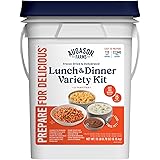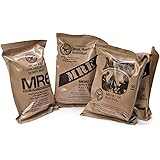Create a Comprehensive Security Plan
Understand Your Surroundings
First off, I’ve found that knowing your neighborhood and the potential risks is crucial. You gotta keep an eye out for local crime rates, especially during natural disasters when people can be more desperate. By getting familiar with what’s typical for your area, you can make smarter decisions about what needs securing in your home.
Also, take note of the local weather patterns and types of disasters that can affect your home. When I did this, I realized that my little corner of the world was prone to flooding now and again. This pushed me to take action, ensuring my preparations were aimed correctly at keeping my home safe against those specific threats.
Lastly, once you know your surroundings, don’t hesitate to connect with your neighbors. There’s strength in numbers, and by cooperating with them, you can set up a neighborhood watch program that keeps everyone informed and safer together. Trust me; it makes a huge difference!
Invest in Strong Locks and Barriers
Upgrade Your Entry Points
When it comes to hardware like locks, I can’t stress enough the importance of investing in high-quality options. I remember when I upgraded my front door with a deadbolt that was much sturdier than the flimsy lock I had before. It provides way more peace of mind when the storms roll in!
Don’t just stop at the front door, though. Make sure your windows are secured too. Often, folks forget that windows can be easy entry points for burglars. I added window locks and reinforced them with security film, making it just a little harder for anyone to get through. Every little bit helps!
Lastly, consider installing a solid fence or gate around your property. It doesn’t have to be fortress-level, but a good fence can deter would-be thieves. I’ve found that a well-kept yard signals care and attention—which might just be enough to make someone think twice about trespassing.
Utilize Smart Technology
Invest in Security Cameras
<p#In today’s digital age, security cameras are a game changer. I’ve set up some simple yet effective cameras around my property, and it really helps me keep tabs on what’s happening—even when I’m not home. It gives me such a sense of security knowing I can check in anytime.
Home automation doesn’t stop there. I also love having motion-activated lights outside. These babies light up any movement and can really throw a spanner in the works for someone trying to sneak around in the dark. It’s like having a personal night watchman!
== > What if ... Get a FREE Subscription to PREPARE
Lastly, consider linkages; many systems now let you supervise your cameras and alarms right from your phone, making it easier to respond quickly if there’s trouble. I can tell you from experience, convenience can really change how secure you feel in your home.
Plan for Disasters
Have an Emergency Kit Ready
In my experience, planning for an emergency can save you from a lot of headaches later on. I always keep an emergency kit stocked up with essentials like food, water, and first-aid supplies. It’s that “better safe than sorry” approach that has come in handy time and again.
Get Preparedness and Self-Reliance Tips. Subscribe Now!
Also, don’t forget about important documents! I keep copies of vital papers in my kit, and I have digital backups too. If a disaster strikes and I’m out of the house, I want to ensure I have everything I need to prove ownership and access my accounts later.
And here’s a crucial tip: regularly check and update your emergency supplies. I make sure to go through my kit a couple of times a year to replace expired items and reassess what I might need to add, especially when a storm is brewing. You never know when you’ll need it!
Establish a Communication Plan
Keep Everyone in the Loop
When disaster strikes, having a communication plan can be a lifesaver. I set up a simple system where my family members know who to contact and where to meet, should anything chaotic happen. It really clears up confusion when everyone knows the drill!
Use technology to your benefit! Remember to have a backup way to communicate in case of power outages. I often talk with my friends about the importance of landlines in emergencies. You’ll be surprised how many people still have them tucked away!
Lastly, don’t forget your pets! I’ve included my furry friends in my communication plan; knowing where they’ll be if things go wrong assures me they’re safe and sound. Make sure that everyone involved knows how to include them in emergencies—your pets depend on you!
Frequently Asked Questions
1. What are the first steps I should take to secure my home during a disaster?
The first steps involve assessing your area’s risks and upgrading entry points with stronger locks and security systems. Knowledge of your neighborhood can be invaluable in planning your safety measures effectively.
2. How can I effectively use technology to protect my home?
Investing in smart technology, like security cameras and motion-activated lights can significantly enhance your home security. Their convenience allows you to monitor your home from anywhere.
3. What should I include in my emergency kit?
Your emergency kit should contain essentials like food, water, first-aid supplies, personal documents, batteries, a flashlight, and other items that are specific to your household needs.
4. Why is forming a communication plan important?
A communication plan ensures everyone knows how to reach each other during emergencies. It prevents confusion and helps in establishing a clear plan of action, which is crucial in stressful situations.
5. How often should I review my security measures?
It’s a great idea to review your security measures at least twice a year or whenever there’s a significant change in your living situation, like moving or getting new security devices. This keeps your approach fresh and effective!






